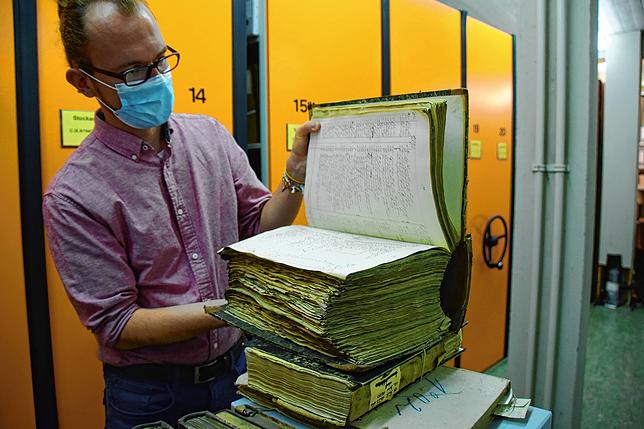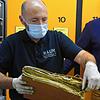Stockach: What makes centuries-old Stockach bills so exciting and how they are now being restored

For the director of the Museums and City Archives, Johannes Waldschutz, this is a success all the way down: he receives about €24,000 from the commission to establish a focus in the Information District (Kek) for mapping damage and recovering account books in the Stockach City Archives. “We’re proud that the app worked,” Waldschutz says of Kek’s positive decision. He adds that this is a typical project.

An antique handwritten bill from the Dandler Company to the City of Stockach. | Photo: Loeffler, Ramona
Supposedly difficult and boring ledgers are valuable: “Invoices are underestimated sources,” Waldschutz says. “It’s not easy to read, but if you take a closer look, it can reveal a lot.” Because over the centuries, bills were attached to books and always kept, while sometimes council minutes were no longer available – for example from the time of the Third Reich. Invoices can provide information about what is going on and developments in the city, where you can see what has been paid for what purpose and how much.
The scourge of time gnaws at sizes
There are quite a few volumes of accounting in the city archives: about 95 meters are on the shelves of colossal sizes. It is partly covered with leather and partly by fabric. The others were just dipped in a pot of glue to hold the pages together. The novels date back to the 16th century, says Waldschutz.
The pods can now be clearly seen in the volumes. Many show different types of damage, according to the archive manager: Here and there are traces of mold, fading ink, or sand from ink between the pages. Even ordinary dust for up to 400 years, paper damage or cover damage. “In some cases, that threatens the population,” Waldschutz says.
If you want to use these books, they will stop in the process. Therefore, some things are currently no longer usable if nothing is traded. Archivist Christopher Wangenheim adds another reason why cleanup and rescue is so important: “Dirt can attract bugs.”

The difference is clear: There is a lot of dust on books decades or even centuries old. The worst ends up in a vacuum bag before packing. | Photo: Loeffler, Ramona
What is the restorer doing now?
Now about a quarter of the stock, about 26 meters of shelving space, is cleaned up, and the damage is being determined. This costs 36,000 euros and the grant from Kik is 24,000 euros. The individual pieces of these damaged books, the restoration of which is very urgent, are then processed in a specialized firm. Matthias Raum of Raum Werkstatt Book and Paper Restoration and his team looks after it. The company won the public tender.
There was room in person in the city archives to sort, unpack, and pack the volumes. Waldschutz, Wangenheim and Raum worked together last year. It was a good cooperation.
Matthias Raum records all the folders in the damage log in a table on the computer. He explains that “the categories of damage depend on usability.” The less you use a book, the higher the damage class. “In the case of Schmel, the book cannot be offered to users,” Waldschutz adds.

City Archives employee Christopher Vangenheim flips over a huge amount of bills. | Photo: Loeffler, Ramona
For a particularly damaged specimen, Raum estimates the restoration costs around 2,000 euros and the time required is three months. So a grant from Kek is almost like a drop in the ocean, according to Waldschütz. He wants to advance again next year: “With some books there is danger behind us.”
Matthias Raum’s work is very intense and complex. “At the end of the day, I filled up an eight-liter vacuum cleaner bag in the archive,” he says. And he has to keep changing his gloves because they get very dirty.
Waldschütz is proud of this model project because it is a highly competitive operation, the funds have been approved for two years and the Stockach City Archive as a very small archive is receiving these funds. “Our request was clearly convincing.”
paper
If you were to keep Stockach bills today, the entire archive room wouldn’t be enough, say Johannes Waldschutz and Christopher Vangenheim of the City Archives. So it’s a good thing that a lot is now digital. In the archives, centuries-old bills have different paper quality. This indicates the crisis years, because cheaper paper was used in them. Manuscripts were expensive, says Matthias Raum of Raum Werkstatt für Buch und Papierrestaurierung. “Just because the quality is so good that things are still around today,” he says of the high-quality materials. (love)

Communicator. Reader. Hipster-friendly introvert. General zombie specialist. Tv trailblazer







